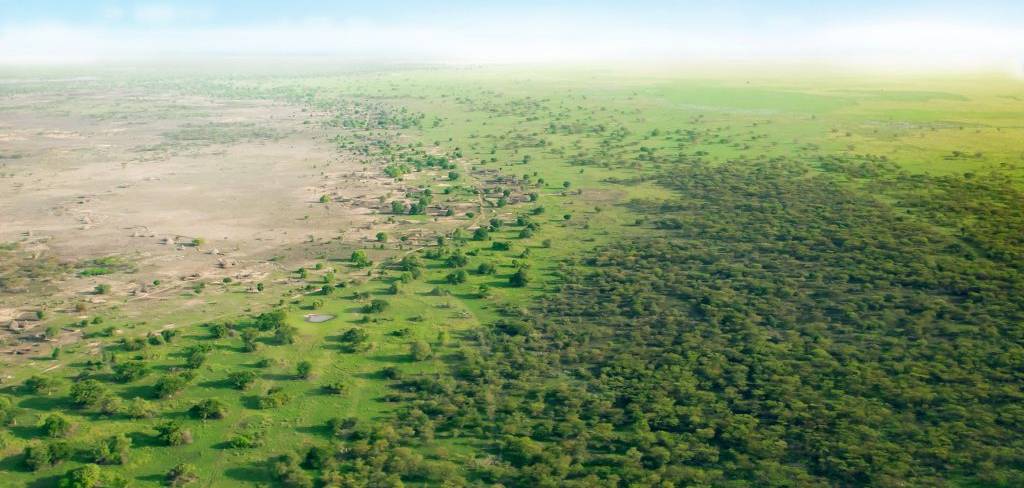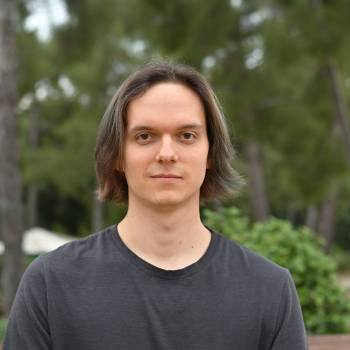
Nigerian President Muhammadu Buhari is set to take over the presidency of the Pan-African Great Green Wall Agency - the continent's effort to restore degraded cropland, grazing areas and forests bordering the Sahara Desert. He succeeds Mohamed Ould Ghazouani, President of Mauritania.
Buhari has the support of the United Nations Convention to Combat Desertification and an international accelerator platform with new funding. But given the slow progress to date and continued confusion over the initiative's vision, there is still a lot of work to be done to achieve farmer prosperity.

The Great Green Wall of Africa is an ambitious initiative launched in 2007 by the African Union. It is now very late and must immediately accelerate to achieve its goals by 2030 , as demanded by the new injections of money and the needs of the populations along the edges of the desert.
The initial objective was to plant a barrier of trees 8,000 km long and 15 km wide connecting Dakar to Djibouti. The aim was to stop the “encroachment of the desert” and to protect the ecosystems and human communities of the south and north of the Sahara from the harmful effects of desertification and drought.
The wall promises to be a compelling solution to the many urgent threats facing the African continent, but also the world community as a whole - including climate change, famine, conflict and migration.
When completed, the Great Green Wall will be the largest living structure on the planet, 3 times the size of the Great Barrier Reef.
The African Union and the Pan-African Great Green Wall Agency rejected the idea in 2012 , shifting the focus of efforts from trees to humans. Closely linked to the need to stem desertification is the improvement of food security and livelihoods.
The new vision that emerged in 2012 is to establish a mosaic of green and productive landscapes across a large area surrounding the Sahara. The aim is to restore entire agroecosystems through land management practices that improve the livelihoods of rural people.
The goals set for the Green Wall by 2030 are as follows:
- restore 100 million hectares of degraded land
- sequester 250 million tonnes of carbon
- create 10 million green jobs in rural areas.
Reported progress has been slow and uneven according to reports commissioned by the United Nations Convention to Combat Desertification and the World Bank. Only some 18 million hectares have been restored so far, and initiatives in some countries are lagging behind. The Food and Agriculture Organization of the United Nations and the United Nations have estimated that the pace must be multiplied by 10 if the goals of 2030 are to be met.
Fortunately, help is on the way. On January 11, 2021, at the One Planet Summit in Paris, world leaders announced financial support of $ 16 billion over five years, nearly 10 times more than what international donors provided between 2010 and 2019. new multi-stakeholder platform will accelerate the Green Wall process through better coordination, implementation, monitoring and impact monitoring. This accelerator will be managed by the agency headed by Buhari.
The task is a challenge, but far from hopeless. There are successful cases of regreening, as the Food and Agriculture Organization's 2016 map shows. The accelerator would do well to study what has worked for regreening in various cases.
The following suggestions are based on our experience and review of successful cases.
Building on past successes
In the densely populated regions of southern Niger, farmers have re-greened more than five million hectares since 1985 by adding at least 200 million trees to their farming systems. They did this not by planting trees, but by protecting and managing the natural regeneration of tree stumps already present and seedlings that emerge naturally from the ground.
In the Seno plains of Mali, around half a million hectares have been re-greened by farmers since the mid-1990s. In central Senegal , hundreds of villages are greener today than there are. 30 years. In Burkina Faso and Niger , farmers have restored several hundred thousand hectares of degraded sterile land in productivity using simple water harvesting techniques.
These and other successful restoration cases have been driven and achieved through grassroots community mobilization and the independent efforts of millions of farm households. They have also been encouraged by some non-governmental organizations (NGOs) and development projects. They have produced massive results at a very low cost.
Many of these efforts have not been officially reported as contributions to the Green Wall, as they have occurred outside of the budgets and control of national forest departments.
The Pan-African Agency must now convince governments to recognize and vigorously support investments in such local initiatives. They are profitable. It may not be the preferred choice of government agencies through which funds are likely to flow. But many years of slow progress suggest this is the only path to success.
No need to plant
The idea of a narrow green line crossing Africa still lingers in too many minds. It is high time to let it go. More trees are indeed needed, but planting is an expensive and precarious means of establishing them in arid and semi-arid lands.
Budgets can be stretched considerably by switching to proven methods that get evergreen trees faster than conventional tree planting. We have found that regreening is almost always farmer-led. Farmers can protect and manage the natural regeneration of trees and shrubs on the land they manage. There are also proven practices for rainwater harvesting and soil and water conservation.
Clarify goals and monitor progress
The change in vision has made it more difficult to track the progress of the Green Wall. It is easier to imagine and monitor a long wall of planted trees than a full restoration initiative. New baselines must be created. All progress must be taken into account, not just that which comes from public spending. The Pan African Agency should insist on greater clarity and consistency in what needs to be monitored.
Collaborate with the non-governmental sector
The non-governmental sector must complement the efforts of the ministries. Members of the Global EverGreening Alliance have pledged their joint ability to restore hundreds of millions of hectares of degraded land. The alliance includes almost all the major development and conservation NGOs around the world, as well as those working in the Sahel.
The NGO community is a tremendous resource. The Pan-African Agency could greatly expand its impact by working with it.
Restoration of the 100 million hectares of degraded land surrounding the Sahara is possible. But attitudes within governments and donor organizations need to change. So far, success has been largely due to grassroots efforts with only modest support from outside sources. So the strategy for the future is clear: invest in upgrading and duplicating proven successes and abandoning those that have failed.
Although President Buhari has not indicated the direction the agency will take under his presidency, we hope that he can follow these recommendations.
Sources:
 Lars Laestadius - Assistant Researcher, Swedish University of Agricultural Sciences
Lars Laestadius - Assistant Researcher, Swedish University of Agricultural Sciences
 Chris Reij - Sustainable Land Management Specialist, World Resources Institute
Chris Reij - Sustainable Land Management Specialist, World Resources Institute
 Dennis Garrity - Chairman of the Board, Global EverGreening Alliance & Distinguished Senior Fellow, World Agroforestry (ICRAF), World Agroforestry (ICRAF)
Dennis Garrity - Chairman of the Board, Global EverGreening Alliance & Distinguished Senior Fellow, World Agroforestry (ICRAF), World Agroforestry (ICRAF)
Posted on 2021-09-22 09:30









Comments